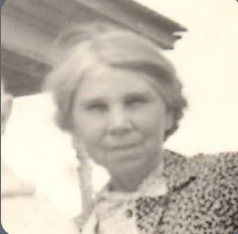It seems only fitting that my first blog entry should follow a trip to southern Colorado where several generations of my family lived at one time and many relatives currently live. It was a wonderful trip taken with my husband, my parents and my brothers to see the sites from my parent’s childhood as well as the places that my ancestors lived, worked and worshipped. While growing up, we would travel every summer from our home in California to the beautiful San Luis Valley, where we would play with cousins and do what country kids do and we loved it. We played in Uncle Lou’s barn, we gathered eggs, we milked cows, I drove a tractor for my cousins as they baled hay, and I learned to outrun a cantankerous sheep. In the evenings, the families often gathered to eat together and then the kids played kick the can and hide and seek and other childhood games while the adults sat and visited. It was a wonderful place filled with loving family and it was heaven to me.
 |
| Old Richfield Church |
This trip was very different from those childhood visits. While we did visit family, we mainly visited sites from my parent’s childhood. We were able to see the old abandoned church where my mom attended as a child. Both of the homes where my parents were born still stand. We saw what is left of my grandfather’s sawmill and the filling station where my other grandfather worked. For many of the sites, only a portion of the building remained, serving as a place mark for those ancestors’ lives, reminding us that they had really been there.
I loved the trip and I was reminded of why we as genealogists need to step away from the books and microfilm readers occasionally and walk where our ancestors walked and imagine what it was like when they were living. It’s there that we feel the very closest to them and learn something that books can’t provide.
We visited the museum located in Sanford, Colorado and I was so glad that we did. It is a small museum, but packed with pictures, newspaper clippings, books and all kinds of memorabilia. I saw pictures that I had never seen before of grandfathers and others who had lived and died before I was even born. The volunteer that was there was so kind and helpful.
One of my favorite stops, and the last thing that I will mention in this post, was our visit to the Old Manassa Cemetery. I love old cemeteries and this one is definitely that. Most of the burials are from the late 1800’s and early 1900’s and it is located outside the small town of Manassa, Colorado whose population hovers around 1,000 people. We knew that we had family buried there and were anxious to locate them. Inside the gate is a lengthy list of unmarked graves located within the cemetery, but there was no listing for the headstones that still exist, so we walked the cemetery. Among those listed on the plaque for unmarked graves were three Ganus babies, one belonging to my great grandparents, Sarah E. Faucett and William Franklin Ganus , and two belonging to my great grandfather’s brother, John Thackason Ganus and his wife Mary M. Chisenhall,. Only Parley L. Ganus, son of Frank and Sarah, had an actual headstone there. As I stood before his little grave, I couldn’t help but think of his parents who had also stood on that very spot. I could imagine their grief as they buried their little boy just a few weeks shy of his first birthday.
 |
| Parley’s headstone |
I wish that I knew more. Why did Parley die? In fact, why did all four of those Ganus babies die? They all died within four years of each other, most during the cold winter months, which can be unbearably cold in the valley. Did the deaths of those four babies contribute to my great great grandparents, John and Olivia Ganus and their five sons, Frank, John, Roderick, Robert and Newton and their families all moving soon after to Oklahoma? I know that even if I find the answer to those questions, I will still be left wanting to know more. It seems that no matter how many questions are answered, there are always more and so I keep searching. In this blog, I plan to share the things that I learn about my ancestors and about research and I know that in the process, I will learn more about myself.
Please follow and like us:


